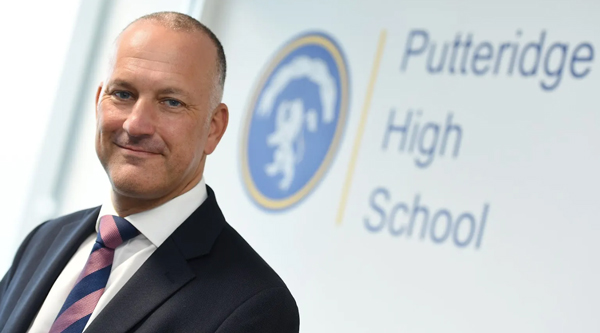Putteridge High School, in Luton, is bucking the national trend of declining attendance for vulnerable pupils. How have they done it? Schools Week takes a look…
Support pupils before they join
The school has a four-phased approach, which begins before pupils even join.
Moving to a new school is a key time for pupils with special needs, who could struggle in an unfamiliar environment, says Laura Bartoletti, assistant headteacher for pastoral care at Putteridge.

“If we get this process wrong, it can have a detrimental effect on their attendance from the very get-go.”
The school runs three “summer school” days in August, for all new year 7s to “learn about the school building, meet their peers and take part in school-based activities”.
They hold an additional day specifically for pupils with special needs, to meet the SENCo and tour the site.
Another pre-transition day solely for SEND pupils allows them to experience a typical day at the secondary, attending lessons and eating lunch in the canteen.
Teaching assistants from primary schools also meet with the school’s SENCo, while Putteridge’s year 7 staff visit feeder schools to meet SEND pupils too.
“We also send photo booklets about our building and publish videos so they can watch over the summer,” says Bartoletti. “This is really special for our autistic children, because they can start to familiarise themselves.”
Staff “give up their time” over the summer to facilitate some of the visits.
At the end of year 6, a quarter of pupils with SEND are “persistently absent” (missing at least 19 days or 10 per cent of school), DfE figures show. This rises to around a third in year 7.
At Putteridge, persistent absence among year 7s with SEND is just 8.9 per cent. The school’s persistent absence rate for those pupils is also 20 per cent – significantly lower than the national average of 30.3 per cent.
Pupil passports and adaptive seating plans
Once at the school, staff then work to “get the minor details right” for vulnerable pupils. “Pupil passports” containing likes, dislikes and special requirements are sent to their teachers.
The school also has a wide range of support including a sensory room, a full-time literacy support assistant (ELSA), ADHD and autism screening, Braille lessons, a counsellor, lunch clubs for SEND pupils, speech and language therapy, and reading and writing support.
The third approach is around teaching and learning. “Adaptive seating plans” mean teachers know which pupils are vulnerable, while “hover” teaching assistants support children with additional needs who do not have a dedicated assistant.
Children with autism are also given lunch queue passes, so they “don’t have to worry about that social environment”.
Attendance at Putteridge is monitored closely and the school’s family worker visits pupils at home if it slips.
Putteridge’s SENCo is full-time and sits on the SLT, to help ensure SEND pupils “are a priority”.
All lessons across the school begin and end in exactly the same way, so that teachers “create a really consistent environment”.
Pupils must also follow a one-way system through school buildings. “For students with needs, this is really comfortable because they can predict what’s happening next.”
Bartoletti says that removing isolation rooms has been “one of our school’s biggest successes”. Instead, the school focuses on “working out what that child’s barrier was to behaving in a class” and addressing it so they can continue learning there.
Instant phone calls and cinema trips
The fourth phase is “attendance support that every child in the school receives”.
School-wide attendance is around 96 per cent – compared to a national average of 91.7 per cent for secondary schools.
The school’s “robust” attendance policy is “communicated regularly” to both parents and children.
If vulnerable pupils are absent, they are called “straight away to ask where they are, what’s the matter? Can we support and try and get them into school?”
Uniform can sometimes be a barrier, says Bartoletti, so some is provided for free.

Pupils hitting 98 per cent attendance are invited on a termly rewards trip, such as a cinema visit or garden party. “The students love it,” Bartoletti adds.
Pupils are also given pins for their blazers to show they have high attendance, which they “wear… with absolute pride”.
Headteacher David Graham says attendance was “significantly below average” when he joined a decade ago. The school joined the Chiltern Learning Trust in 2017.
“Although it defies national figures, we’re constantly working on getting it even better,” Bartoletti says. “We know that the more they’re in school, the better their life chances are going to be.”















Your thoughts